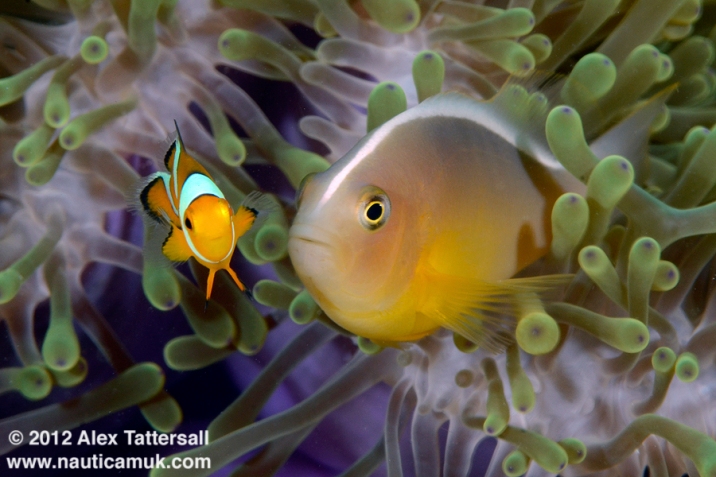Common Name: Sumatran Skunk Anemonefish
Scientific Name: Amphiprion akallopisos Bleeker, 1853
Distribution: Eastern Indian Ocean, from the Andaman Sea to Bali. Also found at Kepulauan Seribu and Karimunjawa in the Java Sea, and likely further east towards Bali.
Type Locality: Priaman, Sumatra, Indonesia
Identification: Body bright yellow along belly, fading into a dingy beige-peach color dorsally. A thin, white stripe extends from just above the upper lip to the base of the caudal fin. The dorsal and caudal fins are translucent white in females; occasional specimens have these more yellowed. Pectoral and ventral fins bright yellow.
Similar: Seemingly identical to the population found in the Western Indian Ocean, but behavioral differences exist in the sounds produced and genetic differences have also been found. Amphiprion pacificus from Polynesia is also essentially identical, but is separated by an even larger biogeographical gap and has a greater number of gill rakers (modally, 18-19 vs. 17).
Notes: At Bali, the furthest known extent of this fish’s range, it is known to hybridize with its Pacific sister species, A. perideraion, producing specimens with aberrant striped markings. It has yet to be found at either Cocos-Keeling or Christmas Island, but it likely does occur here in small numbers, along with A. perideraion. Surveys at Karimunjawa, in the Java Sea, found this species to be considerably more abundant than the sympatric A. perideraion.
The unusual species epithet derives from the Greek ἀκαλλώπιστος (akallopistos), which translates as meaning “unadorned”, in obvious reference to the missing vertical stripes of this fish. This is the only time this name has been used in zoological nomenclature.

















